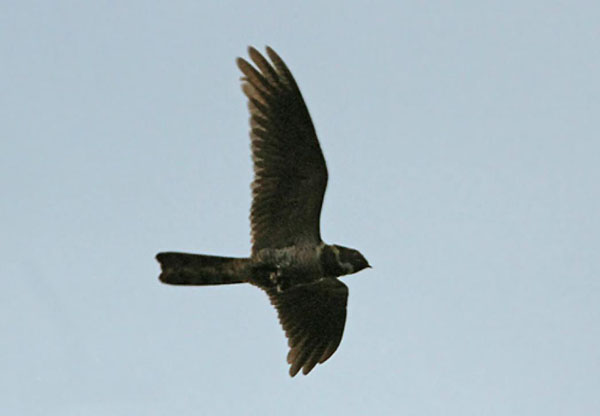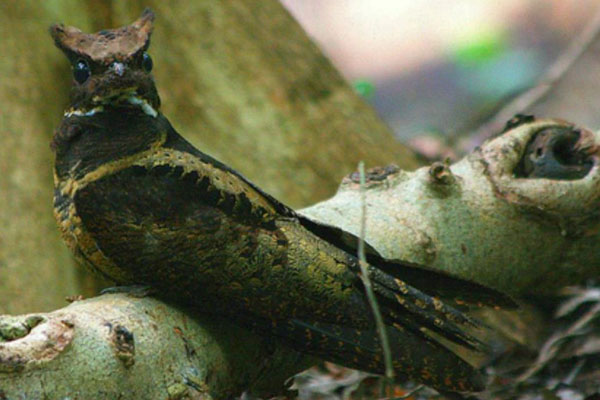Lyncornis macrotis
IUCN
LCBasic Information
Scientific classification
- name:Lyncornis macrotis
- Scientific Name:Lyncornis macrotis,Eurostopodus macrotis
- Outline:Climbing birds
- Family:nighthawks hawks nighthawks
Vital signs
- length:About 41 cm
- Weight:
- lifetime:8years
Feature
The largest species of Chinese nightjar, and the only one with ear tufts.
Distribution and Habitat
In China, it is only found marginally in southern Yunnan. Abroad, it is found from Southeast Asia to India.
The hairy-legged nightjar mainly inhabits evergreen broad-leaved forests, secondary forests and forest edge shrubs in low mountains and foothill plains below 1,200 meters above sea level, especially in steep valleys with sparse trees.
Appearance
A nighthawk of very large size. Its body is covered with moth spots like other nighthawks. There is a white ring on the outer edge of its cheeks, which extends to the nape and gradually turns into leather yellow. The chest has a black chest band, which forms a sharp contrast with the pattern. The ear feathers are obvious. The iris is brown, the beak is horny, and the feet are dark brown.
Details
The hairy-legged nightjar is a medium-sized bird of the family Viperidae and genus Viperidae. It has dark brown horizontal stripes on its body, very conspicuous ear feathers, and a yellow-brown crown, which is lighter than the rest of the head. The top of the head is sandy yellow with very fine black moth-like spots and a few black spots. It is similar to other nightjars. It glides like a kite. It prefers forest edges and open bushes. It is often seen flying over the forest at dusk.

Call: A loud, 3-4 syllable whistle pit, pee-wheeoow. The first syllable is short and sometimes inaudible; the second syllable is long, with a falling tone; the third syllable is also long, rising and ending.

The hairy-legged nightjar often moves alone or in pairs. It is nocturnal, crouching on the grass in the forest or lying on the dark tree trunks during the day. Because its body color is very similar to the color of the tree trunks, it is difficult to find it without paying attention. It is mainly active at dusk and night, especially at dusk, and it keeps circling in the air to hunt. It flies lightly and silently, and glides like a kite. It mostly hunts in flight, mainly feeding on insects, especially insects that are active at night.








